Back in May, Google took the stage at Google Marketing Live 2023 to share its plans to change and improve Google Ads in the coming year. The event was huge—with over 20 announcements on how Google Ads would be enhancing its new search experiences, AI features, measurement, and ad creatives. But one announcement, in particular, stood out on its own—the introduction of a new campaign type called Demand Gen campaigns.
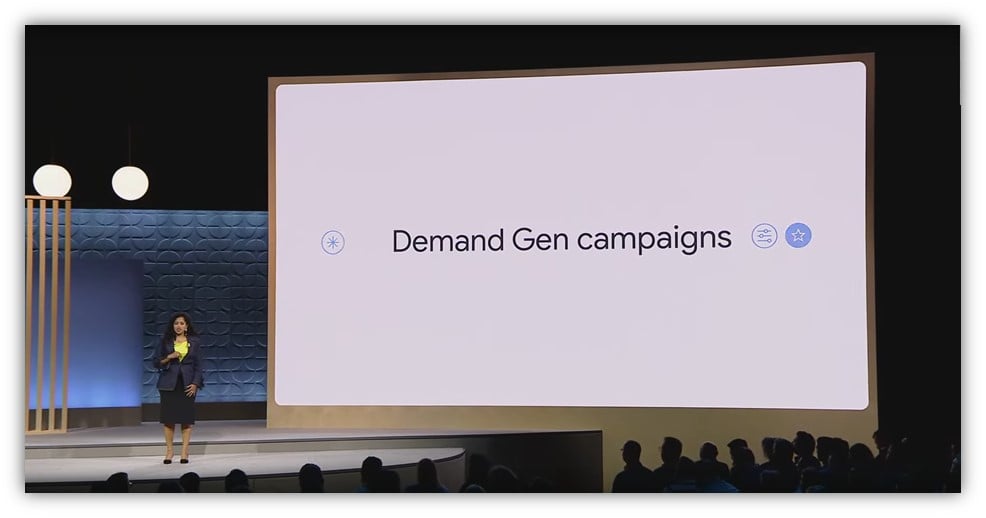
Demand Gen campaigns were created to help businesses reach consumers outside of the text-heavy search engine results page on more visual and entertaining placements like YouTube, Discovery, and Gmail.
With over 3 billion monthly users on these Google-owned placements, we’ve seen that they’ve become a powerful place to influence potential new customers before they even begin to search. Google reports that 91% of consumers have taken action after discovering a new brand on these properties.
After months of waiting, Google recently announced that its new Demand Gen campaigns would be available to advertisers in an open beta. One surprise though—Demand Gen campaigns would be replacing Google Discovery Ads, starting later this year.
What are Google Ads Demand Gen campaigns?
Unlike its flagship search ads, Demand Gen campaigns are designed to reach users before they even think to actively search for a brand. Instead, Google Demand Gen campaigns are designed to reach new audiences and generate interest from users of Google’s more visual and entertaining properties. Google Demand Gen campaigns serve ads across the Google Discovery Feed, Gmail, and YouTube—including the YouTube feed, In-Stream, and Shorts within the same campaign.
This new Demand Gen campaign type feels like a natural expansion to social marketers who use similar visual creative and audience targeting settings across popular platforms like Facebook ads or TikTok ads. However, Google already has released and had success with a similar type of campaign, called Discovery Ads.
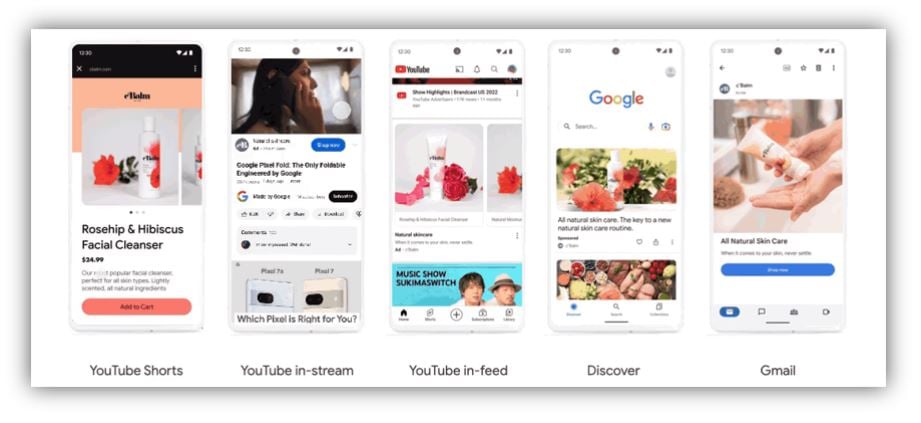
What’s the difference between Google Ads Demand Gen Campaigns and Google Discovery Ads?
Google’s new Demand Gen Ads are similar to its Discovery Ads. Both campaigns reach new audiences across Gmail, YouTube, and the Google Discovery Feed. They also both serve visually impressive ads that swipe, look, and act like common social ad formats.
Since their introduction in mid-2020, many advertisers have used Google Discovery Ads as an inexpensive way to reach and convert a large audience with their existing social creative across these Google properties.
So, why is Google replacing its already successful Discovery Ads with new Demand Gen campaigns? Google Demand Gen campaigns offer a few major enhancements:
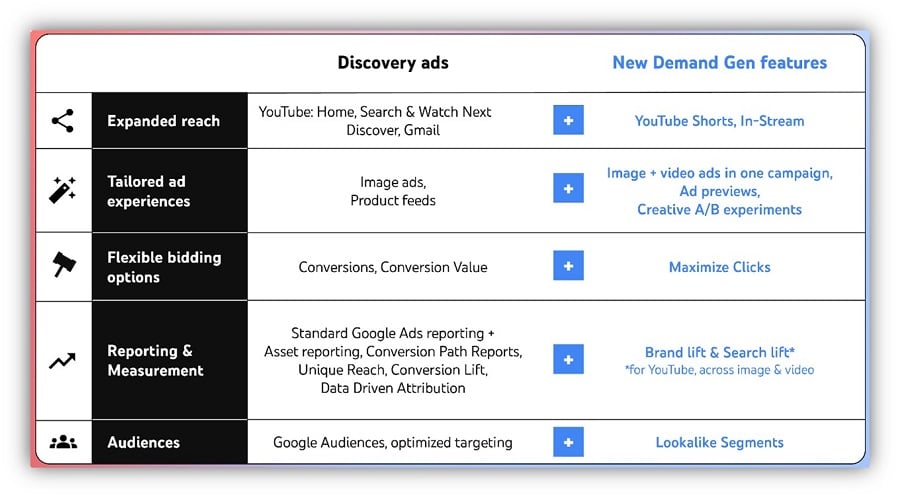
Source
1. Expanded reach on YouTube
Google Discovery Ads currently reach users across the Discovery Feed, Gmail, and parts of YouTube, such as the Home Page and YouTube Feed. That’s impressive on its own—but Google Discovery Ads miss the biggest opportunity on YouTube: within its massive video content.
Demand Gen campaigns include all the reach of Google Discovery Ads as well as YouTube In-Stream and YouTube Shorts. This additional mix of both short-form and long-form video ad content will significantly increase the reach of these campaigns across YouTube.
2. More video ad formats
Within Google Discovery Ads, advertisers could feature either product images or custom image ads across Gmail, YouTube, and Discovery. But Demand Gen campaigns adding reach across YouTube video content means advertisers can now also include up to five videos within their campaigns, in addition to multiple images, headlines, descriptions, logos, and calls to action.
These videos will be shown throughout current Google Discovery and YouTube formats. These video ad formats will show different assets and act differently across Google’s different properties and screen sizes, so be sure to include varying lengths and aspect ratios so that your videos can fit in natively across all the new video inventory.
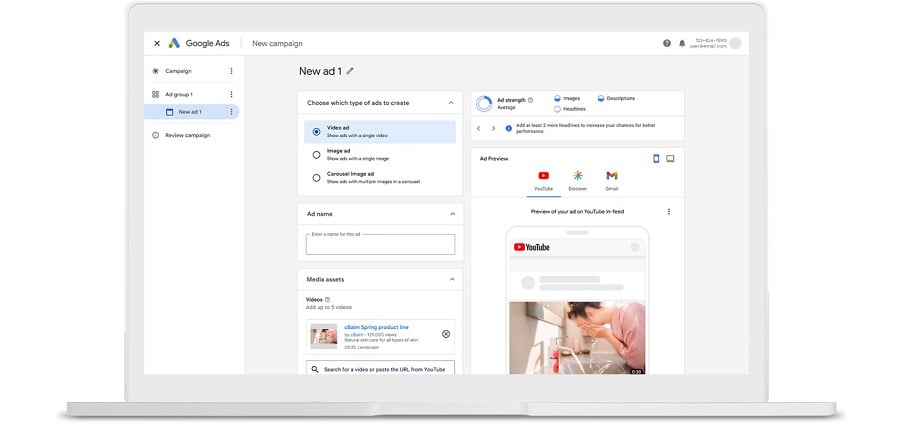
3. New ad creative experiments and tools
Many campaigns allow advertisers to preview how their different text, image, and video assets might look across different ad placements. But since Google’s new Demand Gen campaigns are designed to promote your business across the most visual and immersive content in Google’s ecosystem, Google has introduced a new ad preview tool specifically for Demand Gen campaigns, which allows advertisers to freely preview how different creatives will look across different screens and placements.
Beyond just previewing how your assets will look before you launch your campaigns, advertisers can also create A/B experiments to test different image and video creatives in their Demand Gen campaigns. This will help you gain insight into what kinds of assets perform better for your targeted audiences and continue to improve upon results.
4. Additional bidding options
Google’s Discovery campaigns were designed to help advertisers reach and convert new audiences. As such, they worked best with enhanced conversion tracking and only supported smart-bidding options such as “maximize conversions” or “maximize conversion value” that come with the ability to either set a target CPA or ROAS goal.
Meanwhile, Demand Gen offers the same smart-bidding options, but also allows advertisers to use “maximize clicks” as a bid strategy. This may be more appropriate for advertisers who might have longer or more complicated conversion paths, aim to drive offline sales, or simply just promote more traffic to their website.
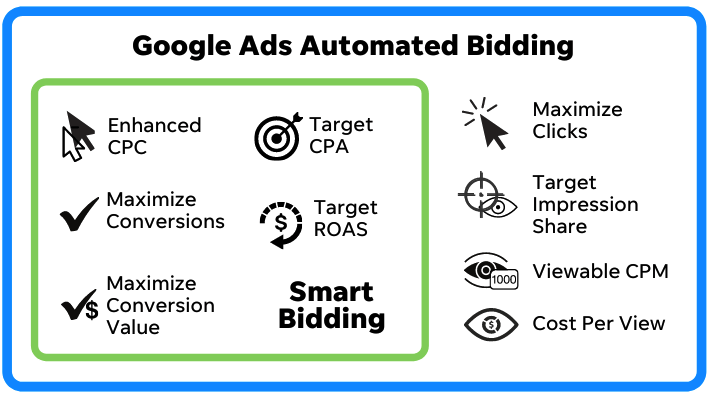
5. More reporting options
Demand Gen campaigns are designed to drive direct action and conversions—but they’re capable of more than just that. Advertisers have seen countless times that after they’ve launched ads to a new audience across Display, YouTube, or Social, they soon notice an increase in searches and conversions from their brand campaigns. Google’s Demand Gen campaigns offer more insight into this uplift with their Brand Lift, Search Lift, and Conversion Lift reports.
6. New audience targeting
Google Ads finally sunset its popular Similar Audiences targeting recently for all campaign types—but Demand Gen campaigns offer something very…similar.
Demand Gen campaigns will have access to a special lookalike audience segment. Lookalike segments are audiences that share similar characteristics and behaviors as those from one of your existing first-party audience segments (such as a remarketing list or customer list). Advertisers can refine these lookalike audiences to be:
- Narrow: Reaching the 5% of users in your target location that are most similar to your original seed list.
- Balanced: Reaching the 5% of users in your target location that are most similar to your original seed list. Google defaults to a balanced lookalike segment unless it’s otherwise adjusted.
- Broad: Reaching the 10% of users in your target location that are most similar to your original seed list.
Google’s lookalike audiences should feel similar to other social advertising platforms’ audiences, such as Facebook’s lookalike audiences which similarly allows advertisers to customize their reach based on how closely users resemble their original seed audience.
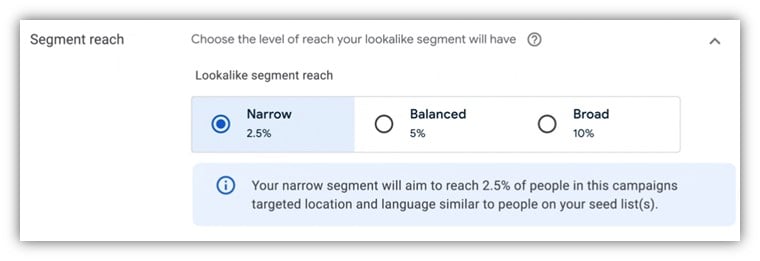
If you’re excited to begin using Demand Gen campaigns—you can sign up for early beta access here. It may take Google a few weeks to process your submission and enable access within your account. Once enrolled in the beta, any active Discovery campaigns will automatically upgrade to Demand Gen campaigns. You won’t lose any historical data or learnings, but you will no longer be able to manage your Discovery Ads like you did before.
Google announced that in October 2023, all advertisers will have access to create new Demand Gen campaigns. Additionally, advertisers will have the option to upgrade their Discovery campaigns to Demand Gen campaigns.
Then in January 2024, all remaining Discovery campaigns will be automatically upgraded to Demand Gen campaigns. All Discovery campaigns are expected to be automatically upgraded to Demand Gen campaigns by the end of March 2024. During this transition, no action is required from the advertiser. Campaigns will continue to serve, and historical data and learnings will be preserved.
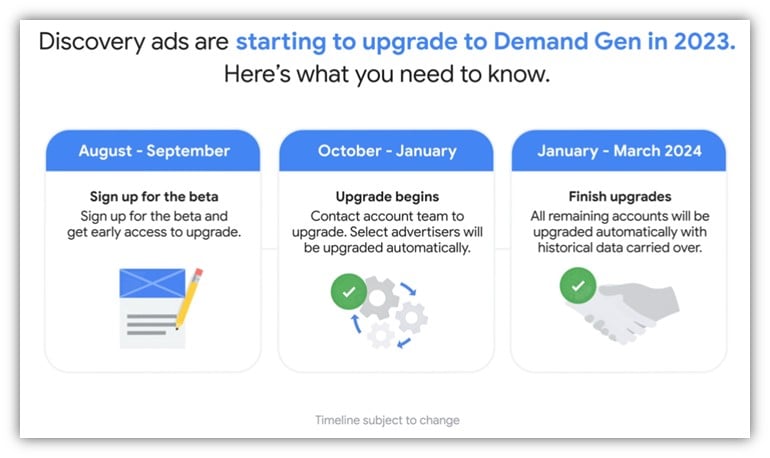
Here are some tips to prepare for the sunset of Discovery campaigns in favor of Demand Gen campaigns:
1. Plan your migration early
Google will upgrade any Discovery campaigns you have active, even if you don’t take any action. Although this isn’t likely to interrupt your ads from running or negatively impact your performance, you’re missing out on all the best features of Demand Gen campaigns by doing nothing.
Plan ahead and spend a few minutes upgrading your Discovery campaigns to take advantage of the extra reach across YouTube and upload new video formats to your campaigns. There’s a huge advantage for advertisers to get access to all this new reach at a discount before others make the migration in early 2024!
Here, Google highlighted businesses that have participated in the beta version of Demand Generation campaigns early on:
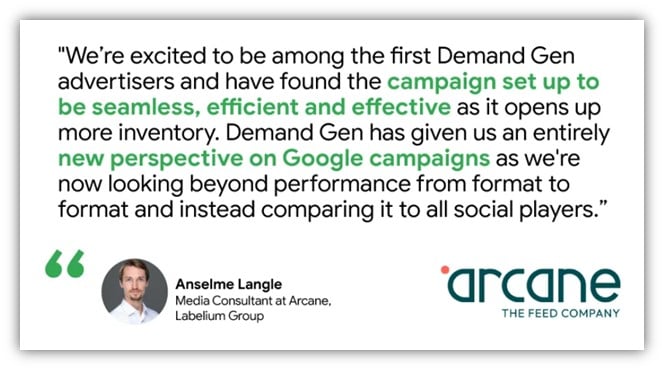
2. Prepare and refresh your creatives
Demand Gen campaigns will feature your ads in very visual, scrolling, immersive settings—like YouTube, Gmail, and Discover. Make sure you set the right impression by providing several contrasting images and videos. Google recommends repurposing high-quality image and video creatives from your email and social campaigns to help your branding stick in these new placements.
For your new video assets, be sure to grab the attention of your audience within the first 5 seconds of the ad. Most users will skip your In-Stream ad or YouTube short within the first 5 seconds—so make sure that you include your solution, brand name, or problem statement early on to leave an impression.
3. Build your audiences
Google’s lookalike segments have a huge potential for these new Demand Gen campaigns, but they first require you to build the original seed audiences using your own first-party data—such as a remarketing audience or customer list. Remember, first-party data is any information your organization owns:
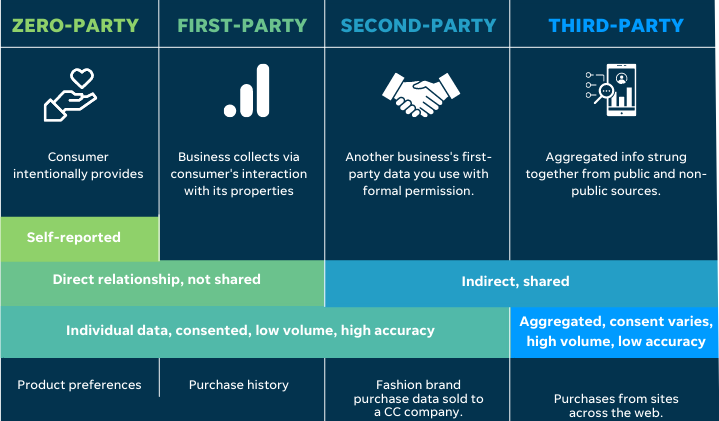
An audience must have at least 1,000 unique matched users to be used for targeting or generating a lookalike audience, so smaller businesses may need to prepare in advance to build up those lists. For example, you may need to focus on increasing traffic to your website first so that you can collect enough data to create a list for a lookalike audience.
Lastly, note that (once your list is large enough to be eligible) lookalike audiences may take a few days to populate.
4. Revisit your conversion tracking
Particularly after the recent GA4 migration, it’s wise to review that your conversion tracking is firing correctly and completely. Demand Gen campaigns are designed to target prospects who may be newer to your brand or solution and are likely more “mid-funnel” than your search campaigns.
With that in mind, Google recommends optimizing for “lightweight conversion events (such as ‘add to cart’) instead of necessarily larger events—like making a large purchase or filling out a complex form.” These smaller conversion actions help feed valuable signals to Google’s bidding and targeting systems in these campaigns so that they can begin to learn and optimize faster.
5. Budget for success
Although Google Demand Gen campaigns can be created and run for as little as $1 a day, lower budgets can make optimizing your results a long, difficult process.
Google recommends that advertisers who are using its smart-bidding set a budget at least 15 times their target CPA to allow their Demand Gen campaign to grow and quickly optimize. So, while a lower budget may be effective, it will take longer to optimize toward your overall goals.
That said, advertisers with smaller marketing budgets may benefit from using the maximize clicks bidding strategy to get started and collect lots of data quickly.
Goodbye Discovery Ads, hello Demand Gen campaigns
Google Demand Gen campaigns could be a powerful campaign type and complement your existing search and social campaigns. Just be sure to migrate early and take advantage of the new video ad inventory across YouTube, Discover, and Gmail. Additionally, if taking advantage of Demand Gen campaigns still seems like a daunting task, see how our solutions can help you make the most out of key campaign types and placements.
To recap, here are our top tips to prepare for the switch from Google Discovery Ads to Google Demand Gen campaigns:
- Plan your migration early
- Prepare and refresh creative assets
- Build your audiences
- Revisit your conversion tracking
- Budget for success



